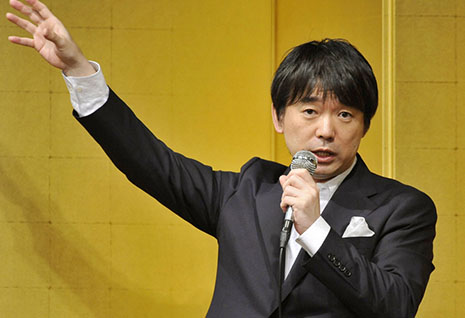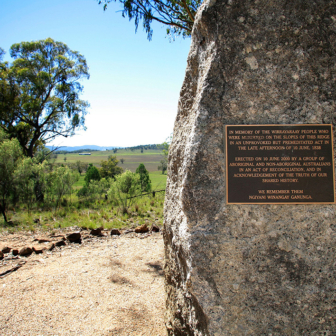THEY exist all over Japan, like tiny sparks of light, flickering and fragile, but somehow surviving against the odds: the peace museums, the reconciliation groups, the local history movements that work to address problems of historical responsibility neglected or denied by national politicians. According to a UN survey, Japan has the highest number of peace museums of any country in the world. But the heritage created at grassroots by ordinary Japanese people is constantly under threat from the hostility of nationalist politicians and sections of the media: and never more so than today.
Among the sparks of light is Osaka’s Human Rights Museum, also known as Liberty Osaka. Founded in 1985, Liberty Osaka is Japan’s only museum devoted to human rights. It features displays about the history of hisabetsu buraku communities (groups subject to social discrimination), the struggle for women’s rights, and minority groups such as the indigenous Ainu community and the Korean minority in Japan. An important aspect of the museum is its depiction of these groups not as helpless victims of discrimination, but rather as active subjects who have helped to create the diversity and richness of Japanese history. By 2005 more than a million people had visited Liberty Osaka.
Today, the museum faces the threat of closure. The Osaka city government, headed by mayor Hashimoto Toru, has decided to halt its funding from next year, on the grounds that the museum displays are “limited to discrimination and human rights” and fail to present children with an image of the future full of “hopes and dreams.”
Hashimoto’s own hopes and dreams for the future have recently been on prominent display. His Osaka Ishin no Kai (generally known in English as “One Osaka,” though literally meaning the Osaka Restoration Association) has high hopes of gaining a substantial share of the seats up for grabs in Japan’s impending national election, and Hashimoto is being hailed by many as a future national leader – even as a national saviour. A relatively young politician with a successful career in law and the media behind him, he has succeeded in winning popular support by projecting the image of an action man unafraid of making the tough decisions.
LIKE Prime Minister Koizumi in the early 2000s, Hashimoto combines personal charisma, budget-slashing economic neoliberalism and hardline political nationalism. But Hashimoto is Koizumi on steroids. His radical plans for reform would see Japan converted into a quasi-federal system with the prime minister directly elected in presidential style, along with massive reductions in welfare spending and a voucher-based education system. He is famous for remarking that Japan would benefit from becoming a dictatorship – a remark that most commentators have not taken as seriously as they should. His penchant for attracting attention by deliberately outrageous statements gives his role on the political stage an unstable and ugly edge that was entirely lacking from Koizumi’s more cool and suave performances.
At a time when Japan’s political system is mired in factionalism and indecisiveness, bold words have popular appeal. Until recently, Hashimoto has shown considerable skill in mixing policies drawn from various parts of the ideological spectrum, so avoiding being easily pigeonholed in conventional political terms. Ever quick to spot an opportunity to boost his political appeal, he responded to mass demonstrations against nuclear power following the Fukushima no. 1 accident by hastily adding an anti-nuclear element to his agenda for a new Japan.
But as the election draws nearer, Hashimoto’s true colours become increasingly visible. He is now wooing the support of leading old-style nationalist Abe Shinzo, a scion of Japan’s conservative elite and one of the rather crowded field of very briefly serving former Japanese prime ministers. (Abe’s tenure lasted precisely one year, from 26 September 2006 to 26 September 2007.) Abe, for his part, has expressed interest in working with Hashimoto to change Japan’s postwar peace constitution.
Amid political change and heightened frictions in Northeast Asia, Hashimoto Toru has found it impossible to resist stirring the pot of nationalist divisiveness. On 10 August, outgoing South Korean President Lee Myung-bak paid a provocative and self-serving visit to the island of Dokdo/Takeshima, whose sovereignty is disputed between Japan and Korea. Two weeks later, Hashimoto responded in kind, playing the shop-soiled card of historical revisionism: a favoured weapon of right-wing politicians in need of free publicity.
Using Twitter as his means of communication, Hashimoto chose this sensitive moment in Japan–Korea relations to denounce the Kono Statement, a key element in Japan’s search for reconciliation with its Asian neighbours. In 1993, after the government had collected and studied extensive documentary evidence over a two-year period, chief cabinet secretary Kono Yohei acknowledged that the Japanese military had been responsible for forcibly recruiting Korean, Chinese and other “comfort women” to work in wartime military brothels where they were subjected to extreme sexual abuse. Kono’s carefully worded statement of apology noted that brokers had often been used to recruit the women, but that in some cases Japanese soldiers or officials had carried out the recruitment themselves.
Fourteen years later, the Abe cabinet issued a partial retraction, denying that Japanese military or government officials had been personally involved in forcible recruitment of “comfort women.” This resolution not only ignored crucial parts of the available evidence, but also failed to answer the obvious question: how does the use of brokers (which no one denies) diminish the moral responsibility of the Japanese state and army? Or, to put it more bluntly, does employing others to do your dirty work make it okay?
Hashimoto Toru’s analysis of this profoundly sensitive, painful and controversial issue is a long, rambling and totally uninformed series of tweets which runs in part as follows: “In 2007 the Abe cabinet made a cabinet resolution that there was no evidence that comfort women were forcible recruited by the military or officials. That is the view of the Japanese government. I am a Japanese, so I stand by the view of the Japanese government. Besides, I am not a historian, so I’m not going to do the work of collecting historical documents to deliberately overturn the Japanese government’s cabinet resolution.”
Hashimoto’s bright new Japan, it seems, will be a place where not only the country’s future but also the events of the past are decided by government resolution. George Orwell would have loved it.
Even without being a historian, though, Hashimoto might have recalled that the “comfort women” fiasco was one of the less glorious moments of his would-be ally Abe Shinzo’s brief tenure as prime minister. Having pushed through the cabinet resolution, which caused considerable damage to Japan’s relations not only with South Korea and China but even with the United States, Abe then publicly backed down, and repeatedly stated that his government intended to stand by the Kono Statement after all. He went on (bizarrely) to make a rather half-hearted apology, not to the victims themselves but to President George W. Bush, for any hurt caused to the “comfort women.” Equally bizarrely, Bush solemnly accepted the apology.
HASHIMOTO’s politics poses a dilemma for his critics. This is not politics by persuasion but politics by performance. The object of the current performance is obvious. It is to provoke impassioned counter-attacks, preferably from those who can be labelled left-wing and foreign – best of all from those who can be labelled Korean or Chinese nationalists. This will then allow Hashimoto to assume the moral high ground as a martyred nationalist hero assailed by “anti-Japanese” forces. In responding to Hashimoto-style politweets, it is important not to act out his predetermined scenario. But it is equally important that the considerable number of relatively sensible people who have seen Hashimoto as a possible beacon of hope for Japan should recognise what sort of a person they are dealing with.
More broadly, the Hashimoto phenomenon can be placed in the context of the current political instability in Northeast Asia as a whole. A presidential election is imminent in South Korea; a change of leadership is under way in China; and an untested new leader is in power in North Korea. All of this magnifies the uncertainties created by the massive disaffection with the mainstream parties in post-disaster Japan. It is in this context of change and anxiety that we see the resurgence of territorial disputes over the Senkaku/Diaoyu Islands and Takeshima/Dokdo, as well as of nationalist rhetoric such as Hashimoto’s.
This makes a careful and considered response to Hashimoto particularly important. Above all, the phenomenon should not be “nationalised.” Hashimoto does not speak for Japan, and to condemn Japan because of his comments would only boost his demagogic appeal. The best reply from those who hope he never will speak for Japan is to allow his words to speak for themselves. Those outside Japan who are alarmed or offended by these words should seek out and lend support to the embattled peace, human rights and reconciliation groups in Japan that also seek a different future, so that their voices too may be heard at the national level.
Japan urgently needs political renewal and hope. But this is not going to be achieved by replacing the dull faces of traditional party politics with an egocentric would-be megastar who plans to conduct foreign policy by Twitter. Rather, it is at the grassroots level, in places like Liberty Osaka, that the real hopes and dreams for the future are still being quietly nurtured. The worst tragedy of all for Japan would be to allow the search for “restoration” to extinguish the sparks that still burn bright in many parts of the country. •




